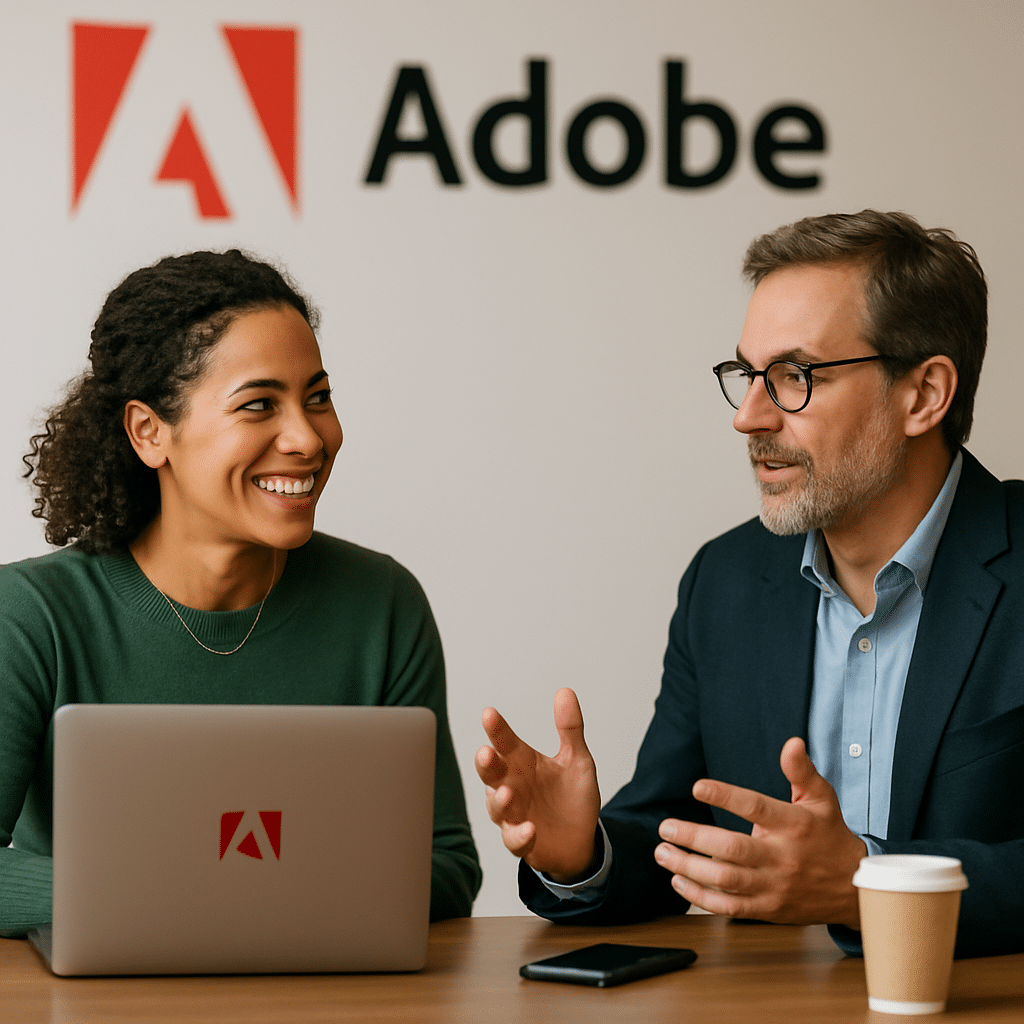B2B influencer marketing success increasingly depends on authentic industry partnerships, and Adobe is leading the way. By collaborating with creative professionals, Adobe amplifies its brand while empowering creatives worldwide. Discover how Adobe’s unique approach to B2B influencer marketing evolves collaboration, builds credibility, and drives results for software brands seeking meaningful industry engagement.
Building Trust: Adobe’s Strategic Partnership Approach with Creative Professionals
Adobe’s strategy for B2B influencer marketing revolves around partnering with prominent creative professionals—photographers, designers, illustrators, and videographers—whose work shapes industry trends. Rather than transactional sponsorships, Adobe fosters genuine, long-term relationships. Influencers are carefully chosen based on expertise, active industry involvement, and alignment with Adobe’s vision for creativity and innovation.
Trusted partners like Aaron Draplin, Lisa Carney, and KelbyOne’s Scott Kelby are more than just social amplifiers; they act as product testers, educators, and valued contributors in Adobe’s development process. This approach builds credibility not only for Adobe, but also for the professionals who share authentic insights into how Adobe tools elevate their workflows and creative outcomes.
Driving Engagement: How Adobe Co-Creates Content with Industry Influencers
Adobe’s content collaborations with influencers stand out for their authenticity and value. The company co-develops webinars, masterclasses, interactive tutorials, and social media campaigns, placing influencer expertise front and center. Creative professionals share real project workflows, offer practical tips on using Adobe tools, and provide solutions to industry-specific challenges—all tailored for B2B audiences such as agency leaders, team managers, and enterprise creatives.
For instance, during 2024’s Adobe MAX conference, influencer-led sessions generated over 1.2 million views and sparked a 36% increase in Creative Cloud enterprise trial signups in the months that followed. This data-driven approach leverages influencers’ authority to both educate and engage, making Adobe’s marketing initiatives indispensable learning resources for professionals.
Measuring B2B Influencer Marketing Success: Adobe’s Data-Driven Results
Adobe sets clear, measurable goals for each B2B influencer campaign, tracking key performance indicators aligned with business outcomes. These include:
- Brand awareness: Growth in reach, impressions, and engagement from influencer-generated content.
- Lead generation: Uplift in account-based marketing (ABM) leads attributed to influencer campaigns.
- Sales acceleration: Enterprise-level Creative Cloud conversions and subscription renewals traced back to influencer touchpoints.
- Community activation: Increased participation in Adobe-sponsored webinars, creative challenges, and LinkedIn thought-leadership groups.
Through data analytics and feedback loops, Adobe constantly refines influencer selection, content formats, and campaign messaging. In 2024, this data-driven approach contributed to a 48% increase in qualified B2B leads from creative industries, directly attributed to influencer-driven initiatives.
Fostering Innovation: Influencer Feedback in Adobe’s Product Development
Adobe empowers creative influencers not just as marketing channels, but as partners in innovation. Early access programs invite top creative professionals to beta test new features and updates. Their exclusive feedback helps shape product roadmaps, ensuring Adobe’s software aligns with real-world B2B creative needs.
For example, influencers provided crucial input on Adobe Firefly’s AI tools, influencing UI tweaks and collaboration features that now serve enterprise creative teams globally. When influencers share these stories—showing how their input leads to better products—Adobe demonstrates transparency and a strong customer focus, enhancing its authority as a B2B technology leader.
Community Building: How Adobe Nurtures a Global Creative Ecosystem
Beyond individual campaigns, Adobe strategically invests in community-centric initiatives to amplify influencer impact. Programs like the Adobe Creative Residency, Creative Ambassadors, and Behance community spotlights foster organic connections between professionals, aspiring creators, and technology experts.
These initiatives enable creative professionals to mentor others, host community events, and advocate for inclusivity and innovation in B2B design. Through mentorship, networking, and shared resources, Adobe’s approach turns influencers into ecosystem builders—extending the company’s brand presence far beyond traditional marketing touchpoints and driving sustained brand loyalty among creative decision-makers worldwide.
Conclusion: Key Takeaways from Adobe’s B2B Influencer Marketing Success
Adobe’s approach to B2B influencer marketing proves that deep partnerships, authentic content co-creation, and a focus on measurable results drive real business impact. By empowering creative professionals as partners and innovators, Adobe sets the standard for brands aiming to thrive in today’s collaborative, expertise-driven B2B landscape.
FAQs: B2B Influencer Marketing and Adobe’s Approach
- What is B2B influencer marketing?
B2B influencer marketing involves partnering with industry experts or professionals whose opinions impact business buying decisions. These influencers co-create content, share insights, and help brands engage target business audiences authentically. - How does Adobe select creative professionals for influencer programs?
Adobe chooses collaborators based on industry expertise, content quality, alignment with brand values, and audience relevance. Influencers are selected to provide genuine insights and value to specific B2B segments. - What types of content does Adobe co-create with influencers?
Adobe develops webinars, tutorials, live streams, case studies, and social campaigns with influencers, all focused on real-world creative workflows, product education, and industry thought leadership. - How does Adobe measure influencer marketing ROI?
Adobe tracks brand awareness, lead generation, sales conversion, and community engagement metrics—using attribution models to connect influencer efforts to B2B business results. - What can other B2B brands learn from Adobe’s influencer marketing success?
Brands should prioritize authentic partnerships, enable creative co-creation, and integrate influencer feedback into product innovation—while setting clear KPIs and measuring both community and business impact.
